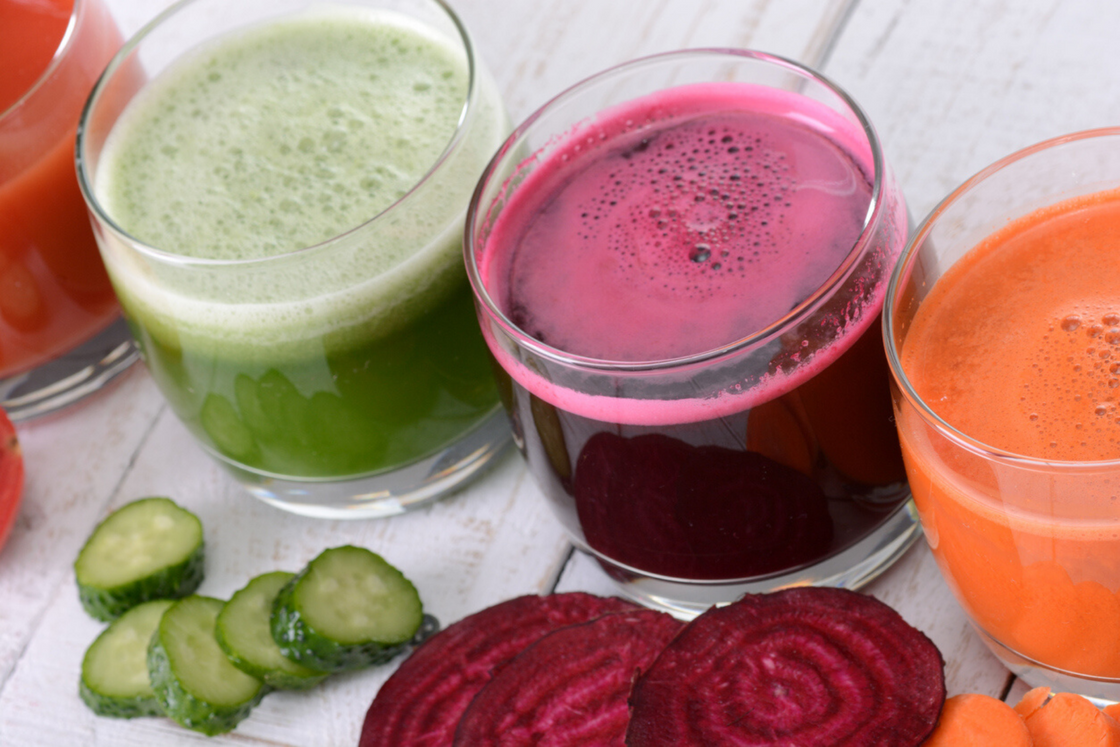Do you love juicing but you don't know how to do this right? Nutritionist, Marianna Sulic, discuss common juicing mistakes that we normally do.
Too many fruits and not enough vegetables
Juicing is an amazing way to get nutrients into your body as they are absorbed straight into your bloodstream. It gives your body a direct shot of vitamins, minerals and enzymes. One of the common mistakes though of beginners to juicing is adding too much fruit into their fresh juices. Although fruits are filled with vitamins and minerals, they also expose your body to a large amount of sugar without the fibre. Try juicing with only one fruit and the rest vegetables. Pears and apples are great low sugar fruits that add a delicious taste and combine well with greens. Or simply just squeeze some lemon in your greens juice for added citrus.
Your juice is lacking in green vegetables
The key to making healthy vegetable juices is to make green vegetables the bulk of every serving. Green vegetables such as kale, spinach, collards, and lettuces like romaine lettuce are packed full of nutrients. In my January blog under superfoods I talk about chlorophyll and its health properties such as supporting the liver in detoxification, aiding digestion and controlling weight management. Green vegetables also won't spike your blood sugar and insulin levels like fruits and sweet vegetables like carrots and beets.
Throwing in everything from the fridge
Just because it’s in the fridge it doesn’t mean it can be juiced. For example, avocados, mangoes and bananas are best blended not juiced. They are thick fruits and add an amazing texture when blended, but when juiced they often don’t yield too much juice and the fruit is lost. Try adding a blended avocado, banana or mango to your juiced greens for a thicker drink and added fibre. Strawberries when juiced turn juice brown, so not very pleasant looking especially for beginner juicers starting out. You may have second thoughts trying to juice raw leeks, aubergine and squash. For best results do some research ahead of time, buy a reputable juice recipe book that use mostly vegetables and then try different recipes out to see what flavours you enjoy the most. If you can’t wait for your book to arrive and you want to get started you pretty much can’t go wrong with the combination of cucumber, celery, spinach, mint and pear!
Using centrifugal juicers
An auger designed juicer slowly compresses fruits and vegetables to 'squeeze' out the juice instead of using high speed force to separate juice from pulp like a centrifugal juicer does. Cheap centrifugal juicers also introduce heat and oxygen in the process and destroy the enzymes and nutrients in your fruits and vegetables. As the auger slowly and quietly crushes and squeezes produce of every variety, juice is separated from pulp dramatically increasing the amount and freshness of your most delicious and nutritious juices.
Juicing the Wrong Way Round
Juicing is, for the most part, quite easy to do. You make sure that your vegetables are cut up small or to fit through the feeding mechanism of your juicer, and you push them in one at a time. It's best to juice soft vegetables like leafy greens first, as they are a bit harder to push through the extraction mechanism than fruit and cucumber can go next with firmer vegetables like carrots, beetroot and celery last. Firmer vegetables like carrots and celery are higher in fibre which can actually help to push any bits of softer vegetables and fruit through the extraction mechanism.
Not drinking the juice right away
Juicing does take a small amount of effort and dedication, but the effects your body will feel are well worth those extra 15 minutes in the morning! As handy as it might be to make up a large jug of juice and keep it for a few days, you are robbing your body from the huge amounts of nutrients it could be receiving. Try to drink your juice straight away. After 15 minutes, light and air will destroy a lot of the nutrients and also all the amazing antioxidants will begin to lose their potency. If you are strapped for time and can't drink it straight away, transfer it to a dark airtight container in the fridge and try to consume it within 24 hours. It may not be as nutrient dense as super fresh juice, but it's still better than not drinking juice at all.



